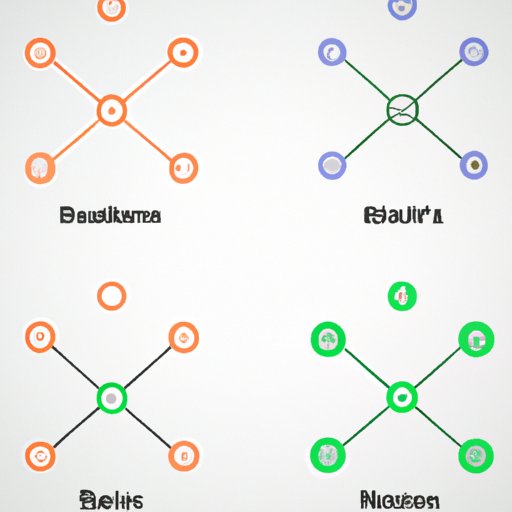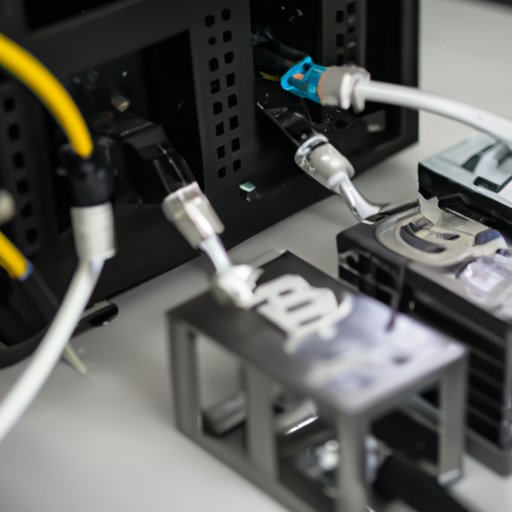Introduction
Bitcoin is a digital currency that is gaining more and more traction as an alternative to traditional fiat currencies. As the popularity of Bitcoin continues to grow, so does the need for reliable infrastructure to support it. This is where Bitcoin nodes come in. A Bitcoin node is a computer that participates in the Bitcoin network by verifying transactions and relaying them to other nodes in the network.
Definition of Bitcoin Node
A Bitcoin node is a computer that runs the Bitcoin software. The software is open source and available for anyone to download and use. It allows users to participate in the Bitcoin network by verifying transactions and relaying them to other nodes. By running a Bitcoin node, users can help to secure the Bitcoin network and ensure its integrity.
Benefits of Running a Bitcoin Node
Running a Bitcoin node has many benefits. Firstly, it helps to secure the Bitcoin network. Bitcoin nodes are responsible for verifying transactions and ensuring that they are valid. By running a node, users can help to ensure the integrity of the Bitcoin network. Secondly, running a node helps to decentralize the network. By having more nodes spread out across the world, the network becomes more resilient and resistant to attack. Finally, running a node gives users access to the latest updates and features of the Bitcoin protocol. This allows users to keep up with the latest developments in the Bitcoin space.
Step-by-Step Guide to Setting Up and Running a Bitcoin Node
Setting up and running a Bitcoin node is relatively straightforward. Here’s a step-by-step guide on how to do it:
Identifying the Right Software
The first step is to identify the right software for your needs. There are several different implementations of the Bitcoin protocol available, such as Bitcoin Core, Bitcoin Knots, and Bitcoin Unlimited. Each implementation has its own advantages and disadvantages, so it’s important to choose the one that best suits your needs.
Installing the Necessary Software
Once you’ve identified the right software, the next step is to install it. Most implementations of the Bitcoin protocol have detailed instructions on how to install the software. It’s important to follow these instructions carefully in order to ensure that the installation is successful.
Configuring the Bitcoin Node
Once the software has been installed, the next step is to configure the node. This includes setting up the node’s IP address, port number, and other settings. Depending on the implementation, there may be additional settings that need to be configured. It’s important to read the documentation carefully in order to ensure that the node is properly configured.

Different Types of Bitcoin Nodes
There are three main types of Bitcoin nodes: full nodes, lightweight nodes, and mining nodes. Here’s a brief overview of each type:
Full Node
A full node is a computer that stores a full copy of the Bitcoin blockchain. It is responsible for verifying all transactions on the Bitcoin network. Full nodes are the most secure type of node and are essential for maintaining the integrity of the Bitcoin network.
Lightweight Node
A lightweight node is a computer that stores only a small portion of the Bitcoin blockchain. It is not responsible for verifying transactions, but rather relies on other nodes in the network to do so. Lightweight nodes are useful for accessing the Bitcoin network without needing to store a full copy of the blockchain.
Mining Node
A mining node is a computer that is used to mine new bitcoins. Mining nodes use specialized hardware and software to solve complex mathematical problems in order to generate new bitcoins. Mining nodes are essential for the creation of new bitcoins.

Technical Requirements of Running a Bitcoin Node
In order to run a Bitcoin node, there are certain technical requirements that must be met. These include hardware requirements, network connectivity, and other factors.
Hardware Requirements
The hardware requirements for running a Bitcoin node depend on the type of node being run. For a full node, a powerful computer is recommended, as it will need to store the entire Bitcoin blockchain. For a lightweight node or mining node, less powerful hardware is required. In any case, it is important to have sufficient RAM and an adequate amount of storage space.
Network Connectivity
In order for a Bitcoin node to function properly, it must be connected to the Internet. This means that the node must have a stable connection to the Internet at all times. If the connection drops, the node will no longer be able to function properly.

Costs Involved in Running a Bitcoin Node
Running a Bitcoin node comes with certain costs. These include computing power, electricity, and other costs. It is important to consider these costs before deciding to run a node.
Computing Power
Depending on the type of node being run, the computing power required can vary greatly. For a full node, a powerful computer is recommended. For a lightweight node or mining node, less powerful hardware may be sufficient. In either case, it is important to factor in the cost of the hardware when deciding whether to run a node.
Electricity
In addition to the cost of the hardware, electricity is another cost to consider. Depending on the type of node being run, the electricity costs can vary significantly. For a full node, the electricity costs can be relatively high. For a lightweight node or mining node, the electricity costs can be much lower.
Conclusion
Running a Bitcoin node can be a rewarding experience. It provides users with the opportunity to help secure the Bitcoin network and gain access to the latest updates and features of the Bitcoin protocol. However, it is important to consider the costs involved, such as computing power and electricity, before deciding to run a node. Ultimately, the decision to run a node depends on the individual user’s needs and preferences.
(Note: Is this article not meeting your expectations? Do you have knowledge or insights to share? Unlock new opportunities and expand your reach by joining our authors team. Click Registration to join us and share your expertise with our readers.)
